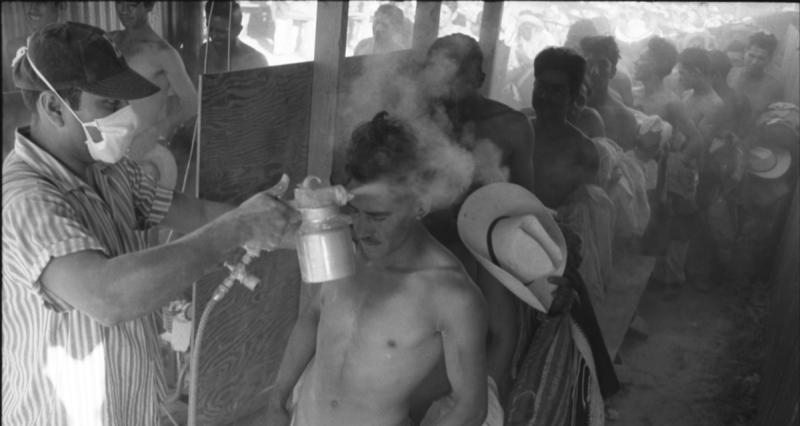Migrant Workers

Courtesy of Leonard Nadel Bracero Photograph Collection, Division of Work & Industry, National Museum of American History, Smithsonian Institution
The Bracero program was a guest worker initiative that spanned the years 1942-1964. The program stemmed from a shortage of labor needed for agriculture and railway maintenance, as many American men left the U.S. to fight in World War II. A treaty signed by the U.S. and Mexico in 1942 allowed Mexican workers to enter the U.S. on a temporary basis to fill the worker shortage. During this period, an estimated 4.6 million Mexican agricultural workers crossed the border under the program to work in more than half of the states in America.
Many of these workers faced a range of abuses, including discrimination, poor living conditions and inadequate housing, and many were cheated out of their wages.
Bracero is a Spanish term which can be defined loosely as “one who works with his arms,” or as a close equivalent, a field hand.
The make-up of Hispanics/Latino subgroups in the U.S. is often misunderstood. Many assume that the majority of Latinos in the U.S. are foreign-born, when the actual proportion is about one-third. A very small proportion of Latinos are farm workers, and many farm workers are from other racial/ethnic groups. The U.S. Census offers data on the population, including this report The Hispanic Population: 2010. (PDF)

Courtesy of Library of Congress, Farm Security Administration Collection, LC-USF33-012038-M1

Courtesy of Library of Congress, Farm Security Administration Collection, LC-DIG-fsa-8b32436

Courtesy of Leonard Nadel Bracero Photograph Collection, Division of Work & Industry, National Museum of American History, Smithsonian Institution

Courtesy of Leonard Nadel Bracero Photograph Collection, Division of Work & Industry, National Museum of American History, Smithsonian Institution
Further Reading
Tribble, A. G., Summers, P., Chen, H., Quandt, S. A., & Arcury, T. A. (2016). Musculoskeletal Pain, Depression and Stress among Latino Manual Laborers in North Carolina. Archives of Environmental & Occupational Health, 71(6), 309–316.
Arcury, T. A., Nguyen, H. T., Summers, P., et al. (2014). Lifetime and Current Pesticide Exposure among Latino Farmworkers in Comparison to Other Latino Immigrants. American Journal of Industrial Medicine, 57(7), 776–787.
Newman, K. L., Leon, J. S., & Newman, L. S. (2015). Estimating occupational illness, injury, and mortality in food production in the United States: A farm-to-table analysis. Journal of Occupational and Environmental Medicine / American College of Occupational and Environmental Medicine, 57(7), 718–725.
Arcury, T. A., Trejo, G., Suerken, C. K., Grzywacz, J. G., Ip, E. H., & Quandt, S. A. (2015). Work and Health among Latina Mothers in Farmworker Families. Journal of Occupational and Environmental Medicine / American College of Occupational and Environmental Medicine, 57(3), 292–299.
Centers for Disease Control and Prevention (CDC). Worker illness related to ground application of pesticide–Kern County, California, 2005. MMWR Morb Mortal Wkly Rep. 2006 May 5;55(17):486-8.